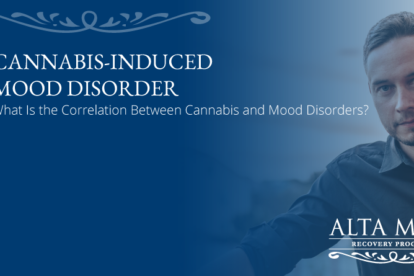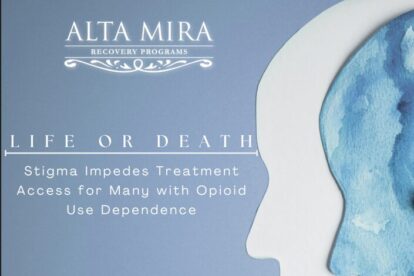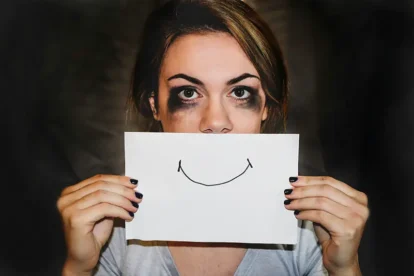
Marijuana Rehab Center
Marijuana addiction, also called marijuana use disorder, is characterized by an inability to control the use of the drug, an intense focus on using it, cravings, and continuing to use marijuana in spite of problems that it causes. Marijuana use disorders can be effectively treated with an individualized treatment plan that includes a stay at a residential facility, therapy, support, lifestyle changes, and a commitment to preventing relapses.
What Is Marijuana Addiction?
Is marijuana addictive? Whether or not marijuana is an addictive, habit-forming drug has been debated in recent years. The debate has become increasingly important as more states legalize the recreational use of marijuana. From research and individual case studies, most experts agree that marijuana can be addictive, but true chemical dependence is not very common.
Chemical dependence occurs when habitual use of a drug causes changes to the brain that result in tolerance, withdrawal, and cravings. While some people may become physically addicted to marijuana like this, more often people addicted to the drug are experiencing psychological dependence. Their bodies and brains have not become dependent on marijuana, but they still feel as if they need the drug and that they can’t stop using it.
According to the Diagnostic and Statistical Manual of Mental Disorders, 5th edition (DSM-5), this is called marijuana or cannabis use disorder. This addictive disorder can be just as difficult to overcome as physical dependence, but good treatment, beginning with a residential stay at a marijuana rehab, is an important first step.
Private and Effective Luxury Treatment for Marijuana Addiction
Marijuana use disorders can be effectively treated, and for those who are committed to a long-term residential treatment stay and with continuing care afterward, the prognosis is very good. A person can learn to live without marijuana, even heavy users. A private marijuana rehab center is most effective because it allows an individual to focus on treatment for an extended period of time while learning necessary skills for returning home and avoiding a relapse.
Marijuana treatment is tailored to each individual and typically includes one-on-one behavioral therapy, group and family therapy, group support, alternative therapies, nutrition, exercise, relaxation strategies and stress management, and learning how to avoid relapses. Relapse prevention is an important part of treatment and includes learning what triggers marijuana use, how to avoid triggers, lifestyle changes, and learning and using healthy coping strategies. Marijuana use disorder is not an issue for most casual users of this substance. However, for a significant portion of people, the use of marijuana does become problematic and affects other areas of their lives. Signs of addiction should be taken seriously. Marijuana addiction treatment is available and can be effective, but if professional and committed, long-term treatment is not sought, the consequences can be serious.
Signs and Symptoms of Marijuana Addiction
According to the DSM-5, there are 11 criteria that indicate a person may be struggling with some degree of marijuana use disorder. The disorder can be rated as mild, moderate or severe. To be diagnosed, a person must experience at least two of the following signs of marijuana addiction within a given 12-month period:
- Using marijuana in larger amounts or for longer than intended
- Trying to cut back on use, but failing
- Spending a significant amount of time or money on getting and using marijuana
- Craving marijuana when not using it
- Failing to meet obligations and responsibilities because of marijuana use
- Continuing to use marijuana even though it causes problems, like relationship conflicts or financial problems
- Giving up other activities to spend more time using marijuana
- Continuing to use marijuana in situations that are harmful
- Developing a tolerance and needing more marijuana to get the same result
- Experiencing uncomfortable symptoms, like anxiety and irritability when not using marijuana
In rare cases, marijuana can cause or trigger serious and dangerous psychotic symptoms, such as hallucinations, delusions, and severe paranoia. This is more common in first-time users and those who have an underlying psychiatric condition, especially those with psychosis. It is also more common with higher doses of the drug. Psychosis should be taken seriously and may require emergency medical care.
Causes and Risk Factors of Marijuana Addiction
As with any type of addiction or substance use disorder, there is no way to determine a definite cause other than repeated, long-term use. The more often someone uses marijuana, the larger amounts they use, and the longer the period of time of regular use, the more likely they are to develop a use disorder. Risk factors that make it more likely a person will develop an addiction include:
- A family history of addictive disorders
- Early use of marijuana, beginning as a child or teenager
- Using marijuana with elevated levels of THC
- Misuse of other substances
- Having a mental illness, especially one that is undiagnosed or untreated
- Childhood trauma
- Having a social group in which marijuana use is common
Withdrawal and Detox
Most people who have a marijuana use disorder are diagnosed based on their behaviors rather than a physical or chemical dependence on the drug. That means that withdrawal is not as common or as severe as with other drugs. It is possible to experience withdrawal, even when the addiction is purely psychological. The symptoms can be physical and mental and can be uncomfortable enough to make it very challenging to stop using. Withdrawal is more common after heavy and long-term use of marijuana. Some of the possible symptoms include:
- Insomnia
- Irritability and anxiety
- Mood swings
- Depression
- Restlessness
- Loss of appetite
- Shakiness
- Sweating
- Fever
- Chills
- Headaches
To stop using marijuana requires that an individual goes through a period of detox, while the drug leaves the body. This may trigger some of the withdrawal symptoms and is more successful when done with supervision. Supervised detox is usually the first step at our luxurious residential treatment for marijuana addiction.
Knowing When It’s Time for Recovery at Our Luxury Marijuana Treatment Center
Getting help for marijuana addiction is a big decision. But it is an important and potentially life-transforming move for anyone who has tried to manage addiction on their own and failed.
Marijuana use disorders can be effectively treated, and for those who are committed to a long-term residential stay and continuing care, the prognosis is very good. A person can learn to live without marijuana, even heavy users.
Our luxury residential treatment for marijuana addiction is most effective because it allows an individual to focus on treatment for an extended period of time while learning necessary skills for returning home and avoiding a relapse. Marijuana addiction treatment is tailored to each individual and typically includes:
- One-on-one therapy
- Group therapy and peer support
- Educational programs
- Family therapy
- Experiential and holistic therapies
- Intensive workshops
- Fitness/recreation
- Relaxation strategies and stress management
- Learning how to avoid relapses
Relapse prevention is an important part of treatment and includes learning what triggers marijuana use, how to avoid triggers, lifestyle changes, and learning and using healthy coping strategies.
We understand that in order for cannabis addiction treatment to be successful, we must listen closely and truly understand your needs, aspirations, personal history, and treatment goals. All members of our care team align closely with you so that you feel safe, respected, and ready to do your work. With this approach, Alta Mira co-creates a profound healing experience with you so you can achieve your recovery goals and reclaim your life.
How to Help a Loved One Get Treatment for Marijuana Addiction
Addiction is not a choice nor a sign of weakness. It is a condition of the brain that can respond to targeted treatment. When your loved one comes to Alta Mira, they will finally have a chance to be free from the debilitating effects of addiction.
While you can have an influence on your loved one’s decision to seek treatment, an individual struggling with cannabis addiction must take ultimate responsibility for their own recovery. Your support and encouragement may be what finally convinces them to seek help for their struggles with marijuana. Treatment works for those who are motivated to get better, and for those whose loved ones are ready, willing, and eager to participate in the recovery process.
How Our Private Marijuana Rehab Center Transforms Lives
During your stay at Alta Mira, you’ll have an individualized treatment plan tailored to your specific needs. This will include comprehensive services for any co-occurring conditions that might be complicating or supporting your marijuana addiction.
- Comprehensive Neuropsychological Testing and Assessment
- Individualized Treatment Plans
- Evidence-Based Treatment Modalities
- Holistic and Experiential Therapies
- Luxurious Private Location
Our Transformational Luxury Marijuana Addiction Treatment Program
Your first 30 days of treatment at Alta Mira is referred to as your Detox, Stabilization, Assessment period, which begins with private, medically supervised detox. During this time, our detox specialists will keep you safe and secure, monitored 24/7, as you rest in the privacy of your own room. You can also expect:
- Weekly meetings with a psychiatrist
- Weekly meetings with a medical doctor
- Neuropsychological testing and advanced psychological testing
- Orientation to our recovery fundamentals and self-regulation skills development
- In-depth family engagement and the option for loved ones to attend multiple 3-day family programs
- Introduction to therapy groups
Following 30 days of stabilization, clients move on to the next phase of their recovery process at Alta Mira, which we call our Transformational Program. Key elements of our complete 90-day transformational marijuana rehab program include:
- Three individual intensive psychotherapy sessions per week
- Weekly meetings with a medical doctor
- Participation in advanced workshops to support introspection, foundational change toward recovery, and relapse prevention
- Expanded neuropsychological assessment and continued weekly psychiatrist meetings inform tailored treatment adjustments and a refined individualized clinical approach
- Practice and integration of recovery principles and self-regulation skills and continued family work to support improved individual outcomes
- Intensive Workshops
Reclaim Your Life at Our Treatment Center for Marijuana Addiction
We believe individuals are best able to focus on their recovery when immersed in a secure, serene, healing setting. That’s why we provide comfortable surroundings while maintaining the most advanced and sophisticated San Francisco Bay luxury marijuana rehab program in Northern California. Clients can expect compassionate care from our best-in-class marijuana addiction specialists.
Seeking a helping hand to guide you through these difficult times is not an easy decision. Our caring and experienced team at Alta Mira can help guide you through the next steps toward achieving lasting recovery.
Don’t let cannabis addiction control your life. To begin your life-changing transformation, Contact us today.
Marijuana Addiction FAQs
The effects of being high on cannabis can sometimes be easier to mask than those of some other drugs and alcohol. There are some characteristic signs, though, that indicate someone is using marijuana or is considered to be intoxicated because of use:
- Problems with short-term memory
- Dry mouth
- Red, bloodshot eyes
- Impaired coordination and motor control
- Altered perceptions
- Delayed reaction times
- Increased heart rate and blood pressure
- Anxiety or paranoia
- Food cravings
Unlike other drugs, overdosing on marijuana is not an issue. According to the Drug Enforcement Administration, there have been no reports of marijuana overdose fatalities in the U.S. However, when the source of the marijuana is not known there is always the possibility that it has been cut with another substance that could cause harm or an overdose. If in doubt that someone is suffering from a drug overdose of any kind, always call 911 or get the person to the emergency room immediately.
It is not uncommon for someone with a marijuana use disorder to have co-occurring disorders. Two that are common include other substance use disorders and mental illnesses. All of these illnesses have risk factors in common, which is one important reason they co-occur. The phenomenon may also be explained by the fact that many people with mental illnesses, like depression, turn to substances, like alcohol, as a form of self-medication.
Long-term marijuana use can also trigger or contribute to physical health conditions. These include respiratory conditions similar to those caused by cigarette smoking: chronic bronchitis or emphysema. Cannabinoid hyperemesis syndrome is a condition that long-term users may develop and that causes severe cycles of nausea and vomiting that can lead to dangerous dehydration.
Dabbing is one of the methods for using cannabis—in particular, cannabis concentrates. People who dab discuss this method’s perceived benefits as creating a more intense high and providing a healthier method of using marijuana than smoking it. However, researchers warn that dabbing may come with health risks, including the potential for cancer.
A dab refers to a single portion of concentrated cannabis, and dabbing is the act of using dabs through vaporization. Dabbing has generally used extracted tetrahydrocannabinol (THC) resin but has increasingly been including other components such as cannabidiol (CBD) and terpenes. The resin can come in different forms, including:
- Oil
- A wax-like soft solid
- A hard solid
The marijuana drug is the dried material—flowers, leaves, stems—of the cannabis plant. It can be used for medical purposes but is primarily used recreationally, to get high. Marijuana is most often smoked, but it can also be mixed into foods, which are called edibles, or vaporized. The compounds in the cannabis plant that are psychoactive are called cannabinoids and the most prominent of these is called THC.
- About half of American adults have tried marijuana at least once. Almost 50 million people, or 18% of Americans, used cannabis at least once in 2019
- Marijuana is the most commonly used substance after alcohol across all age groups.
- People who begin using marijuana before the age of 18 are at a greater risk of developing a use disorder.
- About nine percent of people who use marijuana will become dependent on it. The number is closer to 17 percent in those who first started using the drug in their teens.






